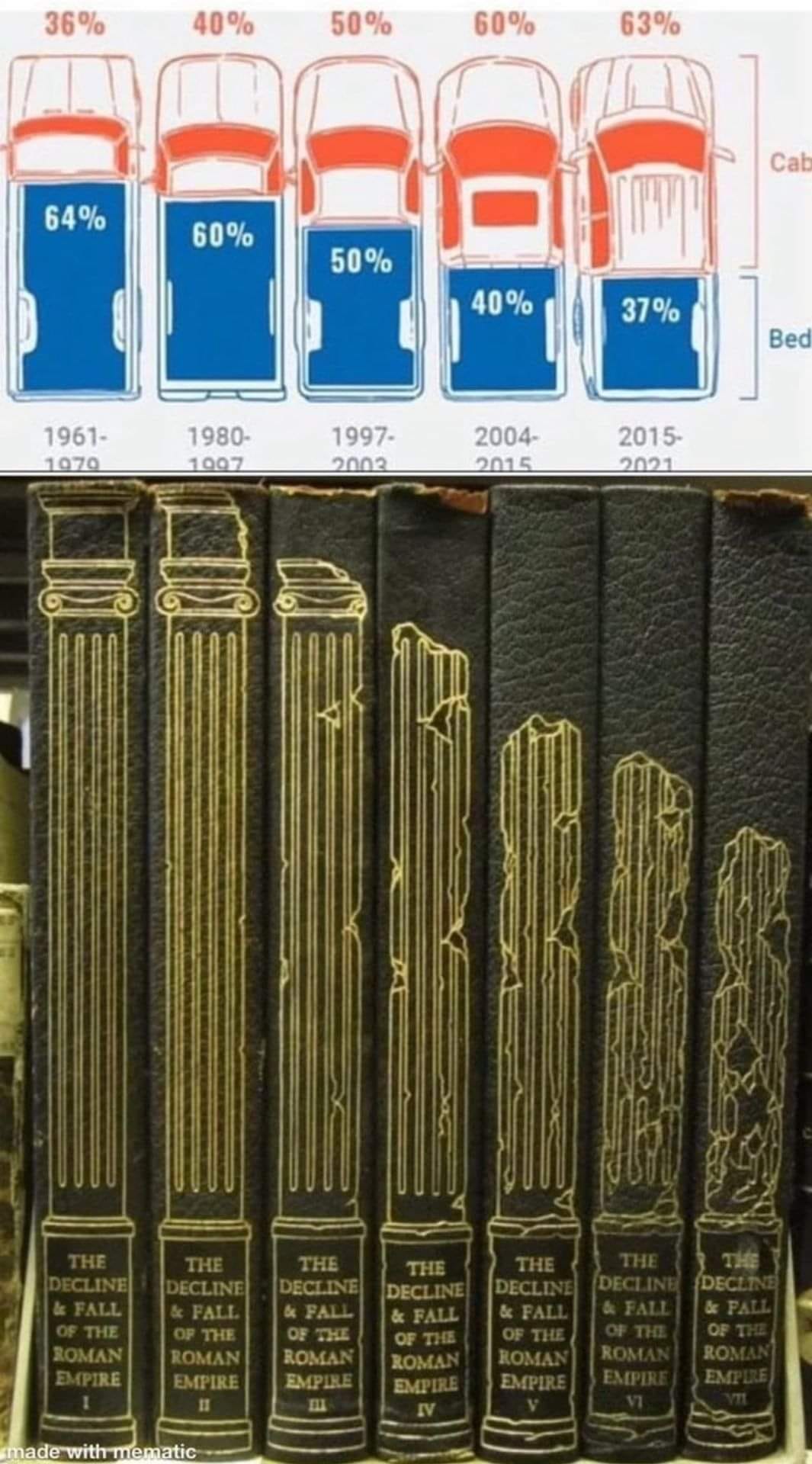view the rest of the comments
Humor
"Laugh-a-Palooza: Unleash Your Inner Chuckle!"
Rules
Read Full Rules Here!
Rule 1: Keep it light-hearted. This community is dedicated to humor and laughter, so let’s keep the tone light and positive.
Rule 2: Respectful Engagement. Keep it civil!
Rule 3: No spamming!
Rule 4: No explicit or NSFW content.
Rule 5: Stay on topic. Keep your posts relevant to humor-related topics.
Rule 6: Moderators Discretion. The moderators retain the right to remove any content, ban users/bots if deemed necessary.
Please report any violation of rules!
Warning: Strict compliance with all the rules is imperative. Failure to read and adhere to them will not be tolerated. Violations may result in immediate removal of your content and a permanent ban from the community.
We retain the discretion to modify the rules as we deem necessary.

Yes, that’s a good assumption. Another possibility is that regulatory language incentivizes car makers to have larger vehicles.
It doesn’t really matter whether there’s a market or not, because the main reasons to bemoan these monstrous trucks are that they are bad for the environment, a nuisance on roads and parking lots, and more dangerous for other cars and pedestrians.
I think if the regulatory language is updated to disincentivize the monster trucks, then we’d see a market for the more 90s style trucks.
For some people, the lack of second row would cause them to not get a truck with a full size bed at all, which I don’t see as a problem.
But accidents in Canada are going down even though we buy just as many trucks so maybe the trucks aren't the issue.
From an environmental perspective, mid size and full size get the same fuel economy.
90s trucks were pretty much exactly the same size, just not as tall.
Crew cab long bed are available on ¾ ton (250/2500) format and up so that's not what people are buying if they don't do truck stuff anyway.